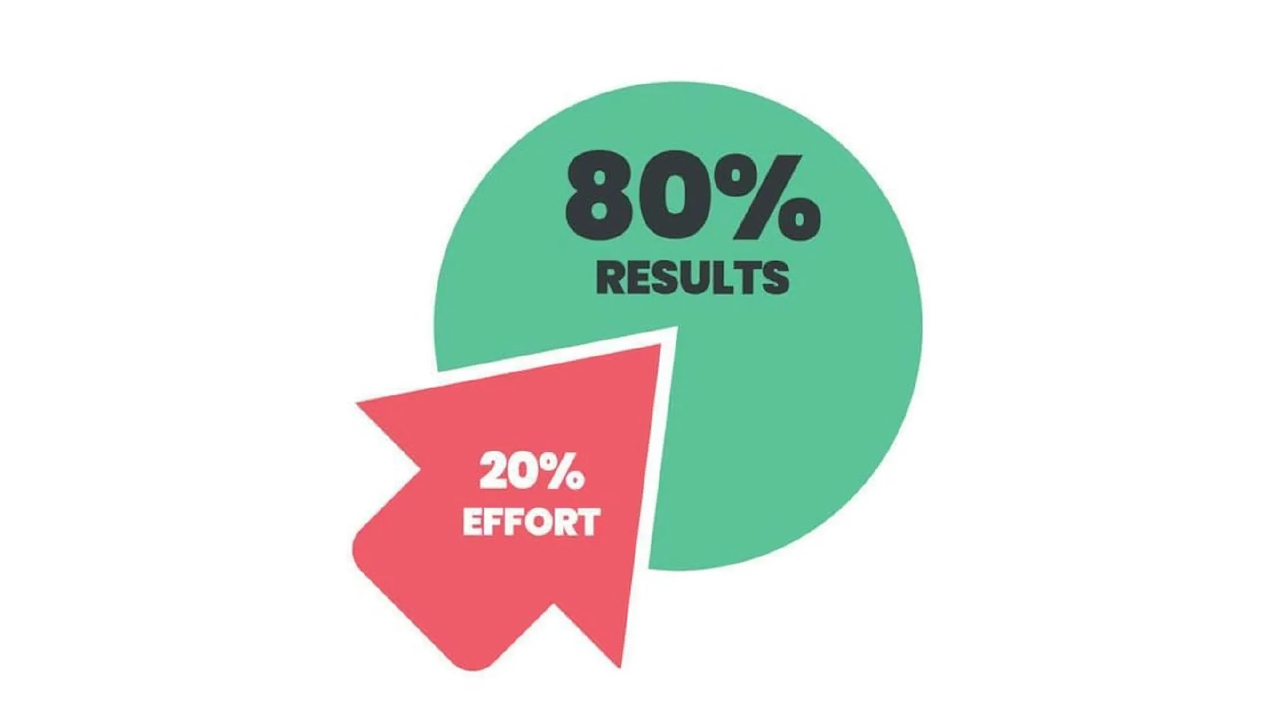
Over two decades of digital marketing evolution have proven one thing: affiliate marketing blogs are one of the most reliable paths to passive income online. While very few people understand the true potential of this online business model, those who master it often build serious income streams that generate money 24/7 — many high-performing affiliates on Digistore24 incorporate blogging into their master strategies, with good reason.
Affiliate marketing represents a $4.7 billion industry, with a huge slice of the pie going to bloggers who earn commissions by promoting affiliate links and products through their websites. Unlike social media platforms where content disappears quickly, blog posts continue driving traffic and generating sales for years. Research shows that blogs deliver conversion rates 3x higher than social media platforms, making them the superior choice for affiliate marketers serious about building sustainable revenue.
The path to financial freedom through blogging and making money with affiliate marketing follows a proven timeline. Most successful affiliate blogs reach their first $1,000 monthly milestone within 6-12 months, provided they follow a strategic approach focused on valuable content creation, SEO optimization, and trust-building with their audience.
This complete guide will guide you through every step of building a profitable affiliate marketing blog, from selecting your niche and setting up your blog to scaling your affiliate business into multiple income streams. You’ll learn how to find affiliate programs that pay fair compensation, create content that drives actual sales, and build an online marketing system that works even while you sleep.
What is Affiliate Marketing?
Affiliate marketing is a performance-based online marketing model where you promote another company’s products or services and earn a commission for each sale or referral made through your unique affiliate link. When a reader clicks your affiliate link and completes a purchase, you receive a percentage of the sale — making affiliate marketing a win-win for both the affiliate and the company. The beauty of this model is that you don’t need to create your own products; instead, you leverage your platform and audience to connect buyers with solutions they’re already searching for. As a result, affiliate marketing has become one of the most popular and accessible ways to monetize content and build a sustainable online business.
Understanding the True Value of Affiliate Marketing

As well as being a source of income that you can start to work on with zero money on the table, a fundamental power of affiliate marketing lies in its mutually beneficial structure. As an affiliate marketer, you have the opportunity to earn commissions by recommending products that genuinely help your audience, while the companies you partner with gain access to new customers and increased brand exposure.
A well-crafted affiliate marketing strategy allows you to build trust with your readers by only promoting products you believe in, which in turn leads to higher conversion rates and long-term affiliate relationships. For businesses, working with affiliates means they can track the effectiveness of their campaigns, optimize their offers, and scale their reach without the upfront costs of traditional advertising. Ultimately, affiliate marketing creates a dynamic ecosystem where affiliates, companies, and consumers all benefit — making it a cornerstone of modern online marketing.
Choosing Your Profitable Affiliate Blog Niche
Your journey begins with selecting an affiliate niche that balances personal expertise with serious income potential. Money blogging is the process of choosing a niche and building a blog specifically to generate income online. The most successful niches for affiliate blogs focus on evergreen markets where people consistently spend money and seek valuable information.
Research High-Commission Evergreen Markets

What are some of the best market niches to delve into?
Personal finance stands out as a great affiliate niche. Credit card affiliate programs, investment platforms, and budgeting tools provide substantial payouts because customer lifetime values are high. To identify the best affiliate programs in high-commission niches, look for reputable companies with strong track records, high conversion rates, and positive reviews from other affiliates.
Health and wellness represents another goldmine — it's a niche very well represented among the highest performing affiliate links sourced on Digistore24. Supplements, fitness equipment, and wellness programs offer attractive income opportunities.
Technology reviews also consistently generate great revenue because consumers research extensively before making purchases. Software affiliates can earn $50-500 per sale, while web hosting affiliate programs like WP Engine offer $100-200 commissions per new customer. These high-ticket items require fewer conversions to reach meaningful monthly income levels.
(For further insight on the best products to promote in affiliate marketing, check out our guide.)
Validate Market Demand with Data
Before committing to any niche, use keyword research tools to validate actual search demand. Google Trends reveals whether interest in your topic is growing, stable, or declining over time. Look for niches showing consistent or upward trending interest over the past 2-3 years.
Analyze the commercial intent behind search queries in your potential niche. Keywords like “best [product] for,” “[product] review,” and “[product] vs [competitor]” indicate strong buyer intent. Tools like Ahrefs or SEMrush can help you identify content gaps where you can successfully promote affiliate links and products without facing overwhelming competition. Once you have validated market demand, find programs that align with your chosen niche by exploring affiliate networks and the Digistore24 marketplace, searching online, or reviewing what similar bloggers are promoting.
Balance Passion with Profit Potential
The most sustainable affiliate blogs emerge when personal interest aligns with market opportunity. Create a “passion-profit matrix” by listing topics you genuinely care about, then researching which ones offer robust affiliate opportunities. This approach ensures you’ll maintain motivation during the initial months when traffic and sales are building.
Consider your existing knowledge and experience. A travel blog benefits from personal experiences visiting destinations, while a tech blog gains credibility when you actually use the products you review. Authenticity builds trust, and trust drives conversions in affiliate marketing.
Evaluate Affiliate Offer Availability
Research affiliate networks and marketplaces like Digistore24 that host and manage affiliate offers for various brands. Your goal is to find and join programs available in your chosen niche. Many will have minimum traffic requirements or approval processes, so identify several options within your niche.
Amazon affiliate links offer the advantage of promoting millions of physical products with a trusted brand, though commission rates are lower than in other contexts (1-4.5%). For higher-value revenue, focus on finding programs related to digital products, software, or services that offer substantial recurring commissions.
Building Your Money-Making Blog Foundation

Creating a professional affiliate website requires the right technical foundation and compliance measures. Your blog’s infrastructure directly impacts your ability to track sales, optimize conversions, and scale your affiliate business effectively.
Set Up WordPress with Affiliate-Friendly Hosting
WordPress powers over 40% of all websites because it offers the flexibility affiliate marketers need. Choose hosting that supports your affiliate marketing strategy - WP Engine provides managed WordPress hosting with excellent performance, while SiteGround and Bluehost offer budget-friendly options with solid reliability.
Your hosting choice affects site speed, which directly impacts both SEO rankings and conversion rates. Amazon’s research shows that every 100ms delay in load time costs 1% in sales. For affiliate blogs where every visitor represents potential revenue, fast hosting is an investment, not an expense.
Install Essential Affiliate Marketing Tools
There are many tools to analyze SEO levels and ensure your blog posts rank well in organic search results, the primary traffic source for successful affiliate blogs. From free tools like Google Search Console to subscription SERP optimization tools like SurferSEO, a huge variety of price points and specializations awaits. For integrated content optimization, Swiss Made Marketing (mentioned here on Digistore24) provides AI tools, SEO capabilities, keyword research, and traffic analysis specifically designed for affiliate marketers.
This type of integrated platform helps monitor search performance while providing optimization recommendations. Keyword Research Tools like Google Keyword Planner, Ubersuggest, and Google Trends also help affiliate bloggers identify trending topics and optimize content for search visibility. These tools are essential for finding long-tail keywords with buyer intent that can drive affiliate conversions. Finally, install an affiliate disclosure plugin to ensure FTC compliance across all your content. Legal requirements mandate clear disclosure when affiliate links are present, and automated solutions prevent costly compliance mistakes.
Create Conversion-Focused Pages
Your About page builds the trust essential for affiliate marketing success. Share your background, explain why you started your blog, and describe your process for testing and reviewing products. Personal stories create emotional connections that increase the likelihood visitors will trust your affiliate recommendations.
Develop a comprehensive Privacy Policy and affiliate disclaimer that clearly explains your monetization methods. These pages satisfy legal requirements while demonstrating transparency that builds reader confidence in your affiliate recommendations. Avoid making these pages sound like a sales pitch — focus on providing honest, valuable information to foster genuine trust.
Implement Tracking and Analytics Systems
Set up Google Analytics from day one to understand your audience and identify your highest-converting content. Configure conversion tracking to measure which blog posts generate actual sales versus just traffic. This data becomes invaluable for optimizing your content marketing strategy over time.
Tools and marketplaces like Digistore24 provide tracking for affiliate links through their dashboards. Alongside this, implementing your own layers of tracking strategy can provide additional insights. Understanding metrics like earnings per click and conversion rates by traffic source enables more sophisticated optimization of your affiliate marketing work.
Build Your Email List Foundation
Email marketing consistently outperforms other channels for affiliate conversions because you own the relationship with subscribers. Set up Mailchimp, or a similar email platform to capture visitor information in exchange for valuable content like buying guides, exclusive discounts, or a coupon code.
Design email capture forms that offer genuine value rather than generic newsletters. “Ultimate buying guide,” “comparison checklist,” or “coupon code” provide specific benefits that encourage signups. Email subscribers often convert at 10-20x higher rates than regular website visitors.
Content Strategy That Converts Readers into Buyers

Creating content that successfully promotes affiliate products requires balancing helpful information with strategic monetization. The most effective affiliate content solves real problems while naturally incorporating product recommendations that generate sales. By strategically adding affiliate links to your blog posts and videos, you can maximize your earnings potential. Additionally, producing high-quality, helpful content can establish your website as an invaluable resource for your audience.
Write Comprehensive Product Reviews
Long-form content performs better for affiliate marketing because it allows thorough product analysis that builds trust and addresses buyer concerns. Aim for 2,000+ word reviews that cover features, benefits, drawbacks, and real-world usage scenarios.
Structure reviews with clear sections: product overview, detailed features analysis, pros and cons, pricing comparison, and final verdict. Include screenshots, personal experiences, and specific use cases that help readers understand exactly how the product solves their problems.
Create High-Converting Comparison Content
“X vs Y” comparison posts target high commercial intent keywords and often rank well in organic search results. These posts capture users in the final stages of their buying decision when they’re comparing specific options.
Structure comparisons with side-by-side feature analysis, pricing breakdowns, and clear recommendations for different user types. End with a definitive winner for most users while acknowledging situations where the alternative might be preferable.
Develop Tutorials and How-To Content
Tutorial content demonstrating products in action provides immense value while naturally showcasing affiliate products. Step-by-step guides that solve specific problems attract highly engaged readers who are more likely to purchase recommended tools.
Include screenshots, video content when possible, and detailed explanations that help readers achieve their goals. Creating YouTube videos to demonstrate products in real-world scenarios can further engage your audience and drive traffic, as these videos often rank well in search results and allow you to integrate affiliate links directly. When you demonstrate using a particular tool to accomplish something valuable, recommendations feel natural rather than forced.
Build Comprehensive Resource Pages
Resource pages listing your favorite tools and recommended products serve as great income generators. These pages often become some of your highest-earning content because they aggregate multiple affiliate opportunities in one location.
Organize resources by category with brief explanations of why you recommend each tool. Update these pages regularly as you discover new products or as existing affiliate programs change terms.
Follow the 80/20 Content Rule

Maintain reader trust by ensuring 80% of your content provides value without direct promotion while 20% includes clear affiliate recommendations. Only promote products or services when it makes sense for your audience, ensuring that recommendations are relevant and genuinely helpful. This balance keeps readers engaged while providing sufficient monetization opportunities to build meaningful income streams.
Maximizing Revenue Through Multiple Income Streams
Diversifying your revenue across multiple programs and product types creates more stable income while maximizing the value of your traffic. Building strong relationships with affiliate managers can help you achieve more sales and boost your affiliate income by optimizing your promotional efforts.
Focus on High-Ticket Affiliate Programs
Web hosting affiliate programs offer some of the highest payouts in affiliate marketing, with companies sometimes paying $100-200 per new customer. Software affiliates can earn $50-500 per sale depending on the product’s price point and commission structure.
High-ticket items require fewer conversions to reach substantial monthly income levels. One hosting sale per week generates $400-800 monthly, while promoting $20 products would require 20-40 sales for similar revenue.
Negotiate custom commission rates once you demonstrate traffic quality and conversion ability. Many companies offer higher rates to proven affiliates who drive substantial revenue.
Target Digital Product Affiliates

Online courses, ebooks, and digital tools typically offer 30-50% commission rates because they have minimal fulfillment costs. Digital product affiliates often provide the highest per-sale commissions, making them excellent targets for content marketing focused on skill development and education.
Promote digital products that complement your niche expertise. A personal finance blog might promote budgeting courses, investment education, or financial planning software. The key is relevance to your audience’s goals and challenges.
Build Recurring Revenue with SaaS Affiliate Programs
Software-as-a-Service (SaaS) affiliate programs provide monthly recurring commissions as long as referred customers maintain their subscriptions. This model builds compound income over time as you accumulate customers who generate ongoing revenue.
Email marketing platforms, project management tools, and business software often offer recurring affiliate programs. Focus on tools you personally use and can genuinely recommend based on your own experience.
Create Your Own Products
Developing your own products allows you to capture 100% of revenue while building authority that enhances your affiliate recommendations. Ebooks, courses, or templates that solve specific problems in your niche create additional income streams. Creating and launching your own health supplement is increasingly easy to do in a sustainable way, also.
Track and Optimize Performance Metrics
Monitor key performance indicators including conversion rates, earnings per click, and revenue per visitor to identify your most effective content and affiliate relationships. Most affiliates regularly track their earnings and use performance data to optimize their strategies for better results. This data guides content creation and helps you focus effort on the highest-performing opportunities.
Use affiliate dashboard data combined with Google Analytics to understand which traffic sources and content types generate the best affiliate results. Reinvest in successful strategies while eliminating or improving underperforming elements.
The Real Work Behind Affiliate Marketing Success

While affiliate marketing is often promoted as an easy path to passive income, the reality is that true success requires dedication, strategy, and ongoing effort. Building a huge audience takes consistent effort—whether through SEO, social media, or email marketing—and it’s essential to promote affiliate products that genuinely resonate with your readers.
Staying current with the latest affiliate marketing tips, tracking your sales, and analyzing what works are all part of the process. Additionally, you must comply with the terms of each affiliate program, clearly disclose your affiliate relationships, and always prioritize helpful content over hard selling. By focusing on value and transparency, you’ll build the trust and authority needed to turn your affiliate blog into a reliable source of passive income.
Scaling Your Blog for Long-Term Passive Income
Building a successful affiliate blog requires thinking beyond individual posts to create systems that generate increasing returns over time. The ultimate goal of scaling your affiliate blog is making money more efficiently and sustainably. Scaling involves optimizing existing content, expanding into new opportunities, and building assets that work independently of your daily involvement.
Master SEO for Sustainable Growth
Organic search provides the most cost-effective, scalable traffic source for affiliate blogs. Unlike paid advertising or social media marketing, SEO investments continue paying dividends for years after the initial content creation.
Focus on long-tail keywords with commercial intent rather than competing for extremely broad terms. Target phrases like “best [product] for [specific use case]” or “[product] vs [competitor] comparison” that indicate strong buyer intent.
Keyword research reveals opportunities where you can rank relatively quickly while targeting users ready to make purchasing decisions.
Build and Nurture Your Email List

Email marketing consistently delivers the highest ROI among digital marketing channels because you own the relationship with subscribers. While social media platforms can change algorithms or policies, your email list remains under your control.
Target 1,000 email subscribers within your first year through consistent lead magnets and valuable content offerings. Provide exclusive content, early access to reviews, or special discount codes that make subscription worthwhile.
Email subscribers convert at much higher rates than casual website visitors because they’ve demonstrated interest by providing contact information. Many successful affiliate marketers generate 30-50% of their revenue through email campaigns.
Update and Refresh High-Performing Content
Your top-performing blog posts represent valuable assets that deserve ongoing investment. Update product information, add new affiliate recommendations, and refresh outdated screenshots or pricing information quarterly.
Google rewards fresh, updated content with better rankings, and readers appreciate current information when making purchasing decisions. Set up a content maintenance schedule to systematically review and improve your highest-traffic pages.
Add new sections to successful posts, incorporate reader questions from comments, and expand on topics that generate engagement. This approach maximizes the value of content that already proves its market appeal.
Expand into Topic Clusters
Once you identify successful content themes, develop comprehensive topic clusters that establish authority across related subjects. If a single product review performs well, create comparison posts, tutorial content, and troubleshooting guides around the same product category.
Topic clusters help you rank for broader keyword sets while providing more affiliate opportunities within each subject area. Search engines recognize topical authority, often rewarding comprehensive coverage with higher rankings across related terms.
Track Meaningful Metrics
Focus on metrics that directly relate to revenue rather than vanity statistics. Conversion rates, earnings per visitor, and revenue per post provide actionable insights for improvement. Tracking these metrics helps you earn money with affiliate marketing more effectively from your affiliate blog.
Monitor how much traffic your blog needs to generate meaningful income. Understanding this relationship helps you set realistic goals and identify when scaling efforts are paying off.
Track which content types, affiliate programs, and promotion strategies deliver the best results. Use this data to guide future content creation and optimization efforts.
Reinvest Profits Strategically
Successful affiliate blogs require ongoing investment in tools, content creation, and optimization. Allocate a percentage of revenue toward premium SEO tools, outsourced content creation, or paid promotion of your best-performing content.
Consider hiring freelance writers to increase your content production volume once you’ve proven what types of content generate affiliate sales. This investment allows you to scale beyond your personal time limitations.
Invest in professional design improvements, faster hosting, or premium plugins that enhance user experience and conversion rates. These improvements often pay for themselves through increased affiliate performance.
Tapping into Affiliate Marketing Communities

One of the most effective ways to accelerate your affiliate marketing journey is by connecting with other affiliate marketers through online communities. Platforms like Facebook groups, Reddit forums, and LinkedIn groups are invaluable resources for sharing experiences, asking questions, and staying updated on the latest affiliate marketing trends.
These communities offer a space to discuss new affiliate programs, troubleshoot challenges, and celebrate wins with peers who understand the unique aspects of affiliate marketing. By actively participating, you can discover new strategies, get feedback on your campaigns, and even find exclusive opportunities that aren’t widely advertised. Engaging with fellow affiliates not only expands your knowledge but also helps you stay motivated and inspired as you grow your affiliate business.
Continuing Your Affiliate Marketing Education
The affiliate marketing landscape is constantly evolving, making ongoing education essential for long-term success. Savvy affiliate marketers regularly invest in their skills by exploring online courses, attending webinars, and reading up on the latest industry trends.
Topics like keyword research, content creation, email marketing, and social media promotion are all critical for optimizing your income streams. Many affiliate programs also provide training resources and support to help their affiliates succeed, so take advantage of these whenever possible.
By staying informed and continually refining your approach, you’ll be better equipped to adapt to changes, outperform the competition, and maximize your earnings as an affiliate. Remember, the most successful affiliates are those who never stop learning and improving their craft.
Conclusion: Your 12-Month Affiliate Blog Action Plan

Building a profitable affiliate marketing blog follows a predictable timeline when you focus on proven strategies and maintain consistent effort. Understanding this journey helps set realistic expectations while staying motivated through the initial months when results are building.
Months 1-3: Foundation and Content Creation
Focus entirely on niche selection, blog setup, and creating your first 15-20 high-quality blog posts. Don’t expect significant affiliate income during this period - you’re building the foundation for future success. Apply to affiliate offer owners and vendors, create essential pages, and establish your content creation routine.
Months 4-8: Traffic Growth and Optimization
Your content should start gaining organic search traction, and you’ll begin seeing your first affiliate sales. This phase requires patience as SEO results take time to materialize. Focus on expanding your content library, building your email list, and optimizing your highest-performing posts.
Months 9-12: Income Optimization and Scaling
With established traffic and proven content performance, shift focus toward maximizing affiliate revenue through improved conversion optimization, additional affiliate relationships, and strategic content expansion. Many bloggers reach their first $1,000+ monthly milestone during this period.
The key to affiliate marketing success lies in viewing this as a long-term wealth-building strategy rather than a quick money scheme. The bloggers who build serious income treat their affiliate blog as a legitimate online business requiring consistent effort, strategic thinking, and patience for compound growth.
Start affiliate marketing this week by selecting your niche and setting up your blog. Begin with one affiliate offer that aligns with your chosen niche, then expand gradually as you prove your ability to drive traffic and generate sales. In addition to your blog, consider launching a YouTube channel to reach a wider audience and grow your income through video content.
Conclusion
Remember that every successful affiliate marketer started exactly where you are now. The difference between those who succeed and those who quit lies in maintaining consistent effort through the initial months when results are building. Your affiliate marketing journey begins with a single blog post - make this the week you publish your first one.


